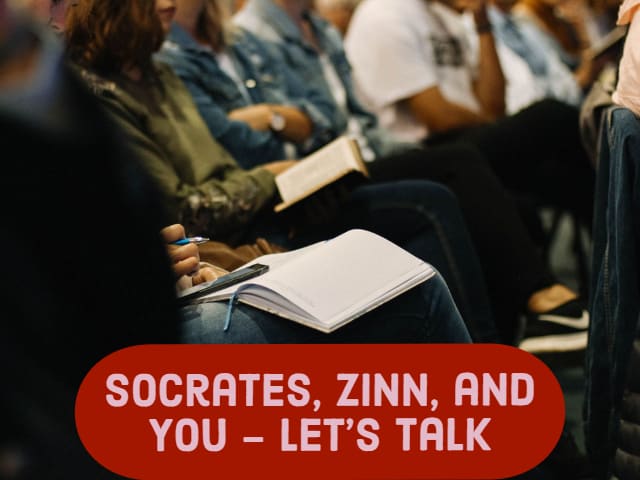A few times throughout each semester, we have students participate in a class discussion based upon the Socratic Seminar method. This week, students discussed the Cold War, McCarthyism, and Ethel and Julius Rosenberg using Howard Zinn’s, “The Twentieth Century,” as their main source of information.
This class period comes toward the middle of our unit on American domestic life and policy during the Cold War. This discussion allows students to demonstrate what they have learned so far, it serves as a reminder/summary of what students should know for this unit, and it allows all students to learn from themselves and their peers in an engaging manner.
Using the Socratic Seminar discussion strategy, the questions posed to students – given to them in advance – serve as a starting point for the discussion. Examples of these include:
- Why were independence movements seen as a threat to U.S. interest? Give specific examples. As a former colony ourselves, does this policy make sense to you?
- What do you think you would have done had you been in the U.S. Senate with McCarthy?
- What is your reaction to the Rosenberg case? Elaborate on the evidence and arguments you find the most convincing. Based on your knowledge, if you were part of the jury, would you have found them guilty or innocent?
These questions enable students to probe deeper into their learning. Additionally, it promotes discussion that relates to the students personally in a way that a textbook never could. This is because it calls the students to consider what they themselves would do in a historical situation. Additionally, it calls to mind questions that still matter today, including topics of integrity, capital punishment, etc.
In facilitating this discussion, I learned first-hand that students thrive when they are given multiple avenues to explore course content. Some students thrive on reading alone, but many do not. This experience proved that it is essential to help all students succeed by providing differentiated learning opportunities. One challenge of this discussion was involving many students when there are a few consistent students who like to have their voice heard. As I practice group discussions more, I hope to discover techniques to help all students feel comfortable in expressing their learning.
Nick






